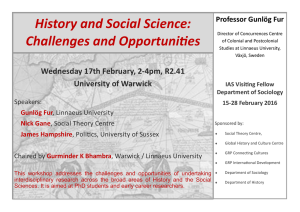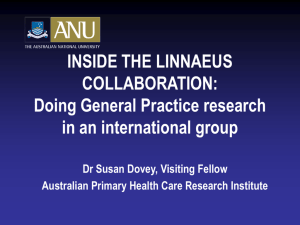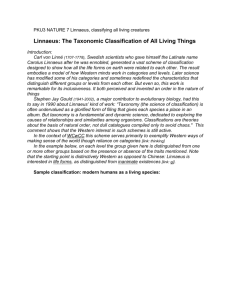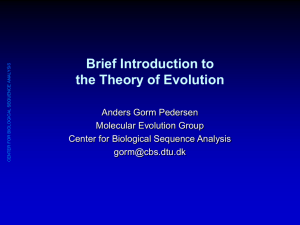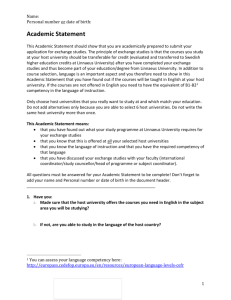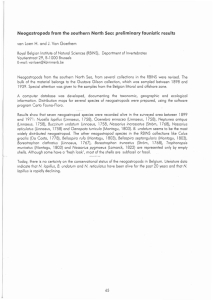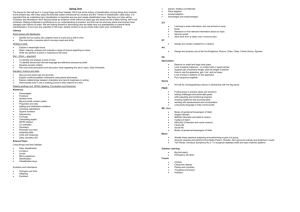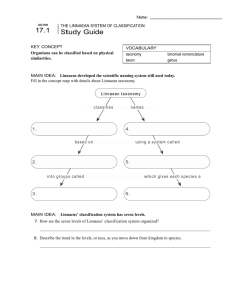"To Apply Nature to Economics and Vice Versa"
advertisement
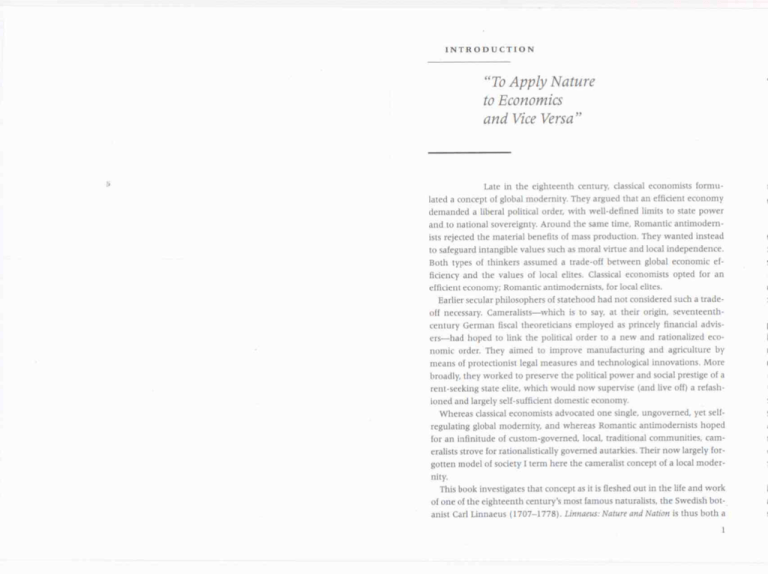
INTRODUCTION
"To Apply Nature
to Economics
and Vice Versa"
Late in the eighteenth century, classical economists formulated a concept of global modernity. They argued that an efficient economy
demanded a liberal political order, with well-defined limits to state power
and to national sovereignty. Around the same time. Romantic antimodernists rejected the material benefits of mass production. They wanted instead
to safeguard intangible values such as moral virtue and local independence.
Both types of thinkers assumed a trade-off between global economic efficiency and the values of local elites. Classical economists opted for an
efficient economy: Romantic antimodernists, for local elites.
Earlier secular philosophers of statehood had not considered such a tradeoff necessary. Cameralists—which is to say. at their origin, seventeenthcentury German fiscal theoreticians employed as princely financial advisers—had hoped to link the political order to a new and rationalized economic order. They aimed to improve manufacturing and agriculture by
means of protectionist legal measures and technological innovations. More
broadly, they worked to preserve the political power and social prestige of a
rent-seeking state elite. which would now supervise 'and live off) a refashioned and largely self-sufficient domestic economy.
Whereas classical economists advocated one single, ungoverned, yet selfregulating global modernity, and whereas Romantic antimodernists hoped
[or an infinitude of custom-governed, local, traditional communities, cameralists strove for rationalistically governed autarkies. Their now largely forgotten model of society I term here the cameralist concept of a local modernity.
This book investigates that concept as it is fleshed out in the life and work
of one of the eighteenth century's most Famous naturalists. the Swedish botanist Carl Linnaeus (1707-1778). Linnaeus: Naturr and Nation is thus both a
1
2
Linnaeus: Nature and Nation
int rouuctsu z a
3
biography and a case study of the relation between natural knowledge and
been perceived as having intrinsic value (as well as exchange value and use
political economy in the early Enlightenment. It asks how one thinker posed
value!. For all these reasons. the bullion drain implied deflation, and econo-
and answered the question: what is the relation between nature and the
economy?
mists theorized that states' main macro-economic goal must he a perpetually
In 1746, writing as an Uppsala University professor to the Swedish Academy
century mercantilists had argued that reselling Oriental goods abroad netted
positive trade balance. as measured in precious metals.'
A century before Linnaeus, to justify the Asia trade English seventeenth-
of Science, Linnaeus summarized his answer to this question: "Nature has
England more specie than its original outlay in Asia.) German economists
arranged itself in such a way that each country produces something espe-
and their Scandinavian followers noted that England's gain was the Conti-
dally useful; the task of economics is to collect [plants] from other places
nent's loss. Alter the end of the Thirty Years War In 1648. Germany's politics
and cultivate [at home] such things that don't warn to grow [here] but can
grow [here]," ,
struggled to reconstruct their war-shattered economies. They also hoped to
In his (Oiler, Linnaeus pondered the fact that natural resources are un-
had flourished in earlier centuries. Thus they developed cameralism, a con-
evenly scattered over the globe. "Each country produces something espedaily useful" Later in the century. Adam Smith argued that because coun-
tinental sister doctrine to mercantilism. {
Cameralists and mercantilists built their doctrine on the traditional goal of
tries differ In how they are endowed, their economies would become more
the European courts: to appropriate the wealth of their subjects. Indeed. the
productive if each specialized in what it did best. and then traded goods internationally. Linnaeus. however, thought that trade could never overcome
word "cameralist" was originally a term for the officeholders who could enter the princely camera. or treasure chamber. Cameralists and mercantilists
the problems of manifold nature and crafts.
alike measured national wealth in rulers' gold hoards. The more sophis-
compensate for the decline of the cross-Alpine German-Italian trade, which
never came across the fully lormulated doctrine. But he was cognizant of
ticated among them also discussed currency circulation. Others—ranging
from Cardinal Richelieu to King Gustav in of Sweden—attempted to solve
earlier and quite elaborate pleas for a freer economy. common in the Swed-
their budget deficits more directly. with the help of gold-producing alche-
ish pamphlet literature during the Era of Freedom between 1718 and 1772,
mists.Is
Cameralists and mercantilists also theorized the advantages that accrued
Linnaeus thus rejected Adam Smith's laissez-faire theory. Of course he
He would have disagreed entirely with Adam Smith's later thesis that voluntary trade benefits both parties. Like other cameralists. he had a zero-sum
to the ruler from an economic symbiosis with his subjects. They did so in the
view of the economy. He regarded trade as parasitic. His benchmark of suc-
secular language of self-interest, and in the practical format of handbooks."
cess was for a country to keep its trade balance positive, and this benchmark
he quantified in "barrels of gold."
analogies. Your subjects, they wrote. are like sheep. if you kill them, you will
Nor did Linnaeus subscribe to the other political answer of his era to the inescapable reality of natural and technological diversity. Hence he scorned
have no wool.)
Both sets of early economists thus aimed for prosperous, populous. and
(Preaching to coarse and drunken Gennan princes, they worked with simple
mercantile imperialism and the military conquest of tropical regions to serve
unified national economies. They hoped to draw together the state's various
as tributaries. We know in retrospect that by 1750 Europe was on the verge
domains into one administrative unit. and to regulate that state's material
of acquiring global economic hegemony. But Linnaeus, like his contem-
links with other polities. To that end. they employed many tools: producer
poraries. regarded non-European powers—the Ottoman. Mughal, Chinese,
monopolies and state manufactures; import harriers; navigation acts; pro-
and Japanese empires—as matching Europe's military skills and productive
powers.
natalist legislation: export bans on gold; funding of science and technology:
In his era, Europeans fretted over the drain of bullion to Asia. No government had the probity or public trust necessary to guarantee a ctmventional
money base. Credit institutions were fledglings. Gold and sliver had always
and improvements to infrastructure.
liitorians of cameralism traditionally study catrieralists' attempts to integrate regions within a state. Noting that in the early modern era the economic. political, and cultural maps of continental Europe overlapped only
4
Introduction
Linnaeus: Nature and Nation
5
haphazardly. they regard carneralisis as nation builders.' In this book. I at-
invasions (1719 and 1720). it was only in 1721, when Sweden's population
tend instead to camerallsts' efforts to Isolate the individual state commer-
had fallen by one third, the king had been murdered, and the country's war-
cially In particular, I am interested in the policies they developed when
lords checked by a newly confident parliament. that the state elites—though
older legal measures failed.
still skirmishing with Russia—turned toward peaceful reconstruction.
In the early 1700s, smaller European countries licensed interloping East
In 1773. a minor nobleman summarized this change of heart. as he deliv•
India companies. Smugglers retailed their stocks of sugar, tea. and spices
ered a funeral oration over one of Linnaeus' colleagues at Uppsala Univer-
from country to country. As a matter of economic theory, however. state
sity. Looking back over half a century, he remembered how, in his youth.
elites still assumed that smuggled imports and tax revenues were inversely
correlated. And on a material level, they collected the monopoly rents generatechin the trade environment that they regulated. Therefore, these rentseekers eagerly enforced legal trade restrictions and fiercely fought against
smuggled goods,
Yet not even the crudest punishments worked. In late seventeenthcentury and eighteenth-century France, for example. about sixteen thousand people were broken on the wheel, hung. or quartered for selling
printed cottons." Still French women continued to wear calicoes. When the
people were beginning to tire of the wartaring life. They no longer succeeded in conquering new provinces and coming home with rich war
booty; on thc contrary, they had experienced the clearly destructive comequences of War. There was no other alternative except to try to do the best
with what they already owned and had. Prosperity 1yd/rm./gal was only to be
reached by work and perseverance. and for that they needed a new kind of
thinking and a growing population. People found that a pure Warrior People needed a different kind of education to be able to feed itself.'•
rent-seeking state elites of early modern Europe battled the comparative ad-
In 1738. when Linnaeus returned home from his journeys abroad and
vantage that fuels international trade. they also needed—and they under-
added to his classificatory work the domestic career of cabinet-sponsored
stood this—a positive economic policy, a direction distinct from restrictions
experimenter. Sweden was a post-imperial state. He knew that as an eco-
and penalties.
nomic policymaker he had to make do with the heartlands that Sweden had
Most typically, early modern state elites crafted such positive policies into
the form of a sea rch for colonies. As producer monopolies, tropical tributar-
or even non-Baltic. natural or manmade wealth. And it had little hope of ac-
ies could supply the spices. textiles, and stimulants that the motherland con-
quiring such imperial powers. Sweden could expand neither into a western
sunters now bought tax-free on the black market. As captive markets, they
ocean empire. nor Into an eastern land empire. At best, his "dear father-
could consume the products that the motherland's state monopolies and
land" could add to its realm only a few neighboring provinces that would be
state licensees made. but could not sell."
ecologically and economically similar to the mainland.
managed to retain. His country had no military control over non-European.
The colonial option was not open to all rent-seeking state elites, however.
At the same time. from Linnaeus' cameralist point of view, trade regula-
As one of Linnaeus' Swedish students enviously observed from London in
tions, and especially restrictions on the Asia trade. had grown more impera-
1761. "here there is such an unnatural bragging over the successes of their
tive. European consumers avidly bought Asian goods such as silks. porce-
weapons, so one hears nothing but that the English can conquer the whole
lain, and tea. But excepting a few mechanical trinkets. and of course guns.
world if they want to."lo By 1700, the smaller. non-Atlantic European coun-
Europe had few goods that Asian peoples were willing to buy in turn. (The
tries could hardly acquire empires overseas. given that the Dutch. French.
English later hit upon the commodity of opium.) In the meanwhile. the Eur-
Spanish. and English ruled over the high seas.
asian trade was financed by a flow of New World silver to Asia. Linnaeus re-
In Linnaeus' homeland, Sweden. state elites had pursued another expan-
garded this exchange as immensely damaging to Europe. As he put it in a
sionist design—a European land empire—throughout the seventeenth century. Indeed. they continued to do so for seventy years after the Peace of
vita (a sheet of notes for his funeral orators). he "considered no thing more
iinporiant than to close that gate. through which all silver of Europe disap-
Westphalia (1648). when Sweden conceded its losses in the Thirty Years
pears.""
Linnaeus voiced views common to continental civil servants in his gener-
War, and through !amines (1710s). bubonic plague (1710-111. and Russian
6 Linnaeus: Nature and Nation
Introduction
7
ation. Given their reverence for metal-based forms of currency, they were
names as a stopgap measure, to make his students into a more efficient sup-
eager. yet unable. to restrain the Asia trade. Indeed, from a cameralist per-
port staff in his project of national self-sufficiency.
spective, their countries' efforts to capture the benefits of mercantile trade
worsened the Etna-wean situation as a whole. Europe's competing East India
Chapter 3. "The Lapp Is Our Teacher." covers Linnaeus' first voyage of discovery. the 1732 Lapland jotu-ney, and his three years in Holland. from 1735
companies insured that consumers everywhere could buy smuggled Asian
to 1738. Linnaeus mythologized his sub-Arctic travels into a formative en-
goods. And against that material availability, civil servants' moral injunc-
counter with an Edenic "wild nation" ISami reindeer herders, and a cross-
tions and legal bans were in vain.
cultural encounter between "high" and "folk" science. He then used this
For reasons both of cameralist theory and geopolitical realities, then, Lin-
performative narrative to enter Dutch learned circles. Yet the Lapland jour-
naeus advocated an economic strategy for his homeland based neither on
ney was also part of the colonization of "our West Indies." as Scandinavians
international trade nor on colonial conquest. but on import substitution.
termed their Arctic frontier. And this colonial venture in turn was predi-
Manufacturing had stood at the heart of cameralist thinking from its seven-
cated on erasing indigenogs culture, as the "wild" Sami and their herds
teenth-century beginnings in Germany. In that sense. Linnaeus only fol-
were chained to the engines of cameralist industry.
lowed stnne eighty years of German reform efforts. The legal framework he
Chapter 4, "God's Endless Larder." begins in 1738, when Linnaeils re-
expected—and enjoyed—tor his own reform plan was also conventionally
turned to Sweden from Holland. It addresses his overall, framing theory of
cameralist. It made use of such time-honored devices as domestic producer 1
nature. and the broad program for science that he drew up as a consequence
monopolies, tariff and non-tariff trade barriers, and government subsidies.
of that understanding. Linnaeus conceptualized nature as a prelapsarian
But the-technologies Linnaeus used, and the science that informed them,
paradise and as a single self-regulating mechanism. with each nation con-
were historically new. Indeed, they involved a particular (even peculiar) sci-
taining all the natural products necessary for a complete and complex econ-
ence. which was predicated on Linnaeus' hypothesis that colonial plants
omy.
could be "tamed" to grow In the Baltic realms. Benefiting from Linnaeus'
Chapter 5. "A New World—Pepper. Ginger. Cardamon," probes into how
prestige as a floral classifier, between c. 1740 and c. 1760 this transmu-
Linnaeus meshed his theology and his economics to form an order at once
tational botany was supported by the Swedish court. parliament, universi-
moral and material, and how that conceptual order framed his scientific
ties, and scientific academics and societies.
practice and underwrote his engagement in politics. It also explores his
The Swedish state elites' cameralist plans for domestic manufactures and
work on the scaffolds and sites of science: co-founding the Swedish Acad-
cash crops thus drew on their most famous naturalist's theories of floral ac-
etny of Science in 1739. reforming Swedish universities, and popularizing
climatization. Linnaeus: Nature and Nation tells the story of the "task of eco-
his natural knowledge in almanacs. pamphlets. newspapers. lectures. and
nomics" Linnaeus put before the Swedish Scientific Academy, and of how,
sermons.
in the course of working it out, its author came to project Lapland cinnamon
groves. Baltic tea plantations, and Finnish rice paddies.
Chapter 6. "Should Coconuts Chance to Come into My Hands," opens
in 1741. when Linnaeus was installed as a professor at Uppsala University.
Chapter 1, "A Geography of Nature," argues that Linnaeus understood
It investigates how in practice he sought to ensure his country's self -
himself as a Lutheran and as a civil servant, that this local cultural reference
sufficiency. He searched the Baltic region for domestic flora and folk knowl-
frame was imaginatively misunderstood by his Romantic followers on the
edge. He sent students on long-distance collecting voyages. And he sought
Continent, and that this misreading lay at the heart of his fame.
to acclimatize foreign flora to Baltic climates—all to replicate within the
Chapter 2. "A Clapper into a Bell." spans 1707-1731 and part of the
homeland what was harvested and husbanded under the more favorable
1740s. It explores how the young Linnaeus began charting his natural sci-
conditions of abroad. and thus re-create within his national borders a trans-
ence (most famously, his sexual system of plant classification), Looking at
oceanic empire
how Linnaeus introduced binomials for flora and fauna between 1748 and
1752, it argues that he first used these brief, stable, and arbitrary species
Chapter 7, "The Lord of All of Sweden's Clams," A Local Life. spans the
1740s to the 1760s. It discusses the research generated in Linnaeus' newly
8
Introduction
Linnaeus: Nature and Nation
9
created scientific institutions by his first generation of Scandinavian stu-
things." Indeed, Foucault. who studied under Sten Lindroth, a historian of
dents. It also shows how the mature Linnaeus presented himself at court. in
science at Uppsala University, followed his teacher in describing Linnaeus as
parliament. in the Academy of Science. and at the university as an econo-
a collector and classifier, unable to investigate the functions or histories
mist as much as a naturalist. Or rather, he posed as the inventor of a new sci-
of organisms and therefore cut off from modern biology_ Foucault parted
ence blending knowledge of the human and the divine order. Yet the mate-
from Lindroth only by suggesting, hyperbolically, that the entire era was
rial success of his economics was paltry.
Linnaean in spirit.
Chapter 8, "His Farmers Dressed in Mourning." outlines the decline of his
This bracketing of Linnaeus as an antiquated natural historian marked
economics, which began with his illness in 1762 and grew precipitous after
most post-World War 11 scholarship. Already by the 1930s the Linnaeus cult
his death in 1778. It goes on to discuss the Romantic reception of Linnaeus.
in Sweden was tapering off, and his considerable scholarly achievements
and hOw, around 1900, Swedish conservatives recast him as a national icon
were largely forgotten. The sugary image of the "flower king" in older Scan-
who recaptured In his science the military victories won by Sweden's fa-
dinavian historiography. the conservative cultural impetus behind that im-
mous warrior kings. In turn. this glorified—and reactionary—portrayal of
age, and the principle of generational contrarianism led modern Scandina-
Linnaeus helps explains why, after the advent in 1912 of a Social Demo-
vian scholars to downplay Lipnaeus' importance. Sten Lindr oth famously
cratic government. he dwindled into obscurity in his "most beloved father-
complained that pre-war Scandinavian scholars made Linnaeus into a
land."
Finally, the Conclusion. "Without Science Our Herrings Would Still Be
"saint, whose soul hovers even today over the scientist's worktable and the
schoolboy's vasculum." He went on to mock Linnaeus' quirky ways, casti-
Caught by Foreigners," reflects on the wider implications of this book's re-
gating him as "a pure scholastic . old-fashioned and lost in his century
search findings. outside the limits of Linnaean historiography. it especially
demonic in his desire to order all things."" (These charges, made in 1953.
discusses how the problem of mediating between local and global economic
echoed Sachs's accusations of 1875.1"
spheres has been conceptualized since the eighteenth century.
Early post-war historians of biology typically present Linnaeus as a last
Aristotelian. His redemption lies outside of science proper, in a "childlike
The themes of Linnaeus. Nature and Nation go against the grain of Linnaean
sense of identification with the world of nature," an "almost instinctive way
scholarship new and old. The earlier literature typically concerns itself with
01 naming things," and a "fascinating style" heralding "the romantic school
evaluating and dating Linnaeus" science. In 1875, the German plant physiol-
of literature in the Scandinavian countries."'" As is indicated by their book
ogist Julius Sachs, in the world's first source-critical history of botany, condemned Linnaeus as a medieval scholastic. In 1903, T. M. Fries presented
titles—Growth of Biology, Forerunners to Darwin, Overtures to Biology, and Origins
of Modern Biologthese historians have interested themselves in natural
Linnaeus as an innovator. foreshadowing developmental nineteenth-cen-
history in order to find the origins of Darwinism.' Unable to find any such
tury biology. In 1926, Henri Daudin argued that Linnaeus belonged to the
origins in Linnaeus' work. they have instead. by that slip of the imagination
Enlightenment with which he coincides chronologically. In 1966, Michel
which engenders progress as male, cast Linnaeus as the eternally feminine.
Foucault suggested that Linnaeus is the foremost representative of a world
or as a Romantic poet in dialogue with living nature.
of thought that is "neither an epilogue to the Renaissance nor a prologue to
To more recent historians. Linnaeus personifies not his era's epistemic in-
the nineteenth century." In 1990. Scott Atran proposed that Linnaeus' flora
ability to practice modern biology, but its deplorable lack of gender equity.
"emerges as an elaboration of jthef universal cognitive schema" structuring
racial equality, and ecological sensibility. In this portrayal Linnaeus engages
folk-biological taxonomies, , '
in an "explicit attempt to 'naturalize' the myth of European superiority,"
Linnaeus' science may have been belated. of its own time, forward-
builds an "imperial model of ecology. dovetailing] neatly with the needs of
looking, or outside history proper. Yet both Julius Sachs and Michel Fou-
the new factory society." and crafts floral systems "making [gender] in-
cault bracketed Linnaeus as a "a great life from the baroque."" In turn.
equalities seem natural.""
Foucault abbreviated the work of this "classical age" as a "pure tabulation of
Narrating how pluralist, organic, and gynocentric world views are over-
10 Linnaeus: Nature and Nation
taken by unitary. industrializing.. phailocentric systematics, these scholars
write Linnaeus into a Verfallsgeschichir (history of decline). They thus share
with traditional Linnaean scholars the founding premise of a central moral
narrative and a teleological philosophy of history (although philosophy may
not be the right word for the trade practices and mental habits diffused
throughout their texts).
In this book. I do not analyze how modem Linnaeus was. (It is, I suspect.
a meaningless question.) Nor do I seek to pass moral judgment on him.
Rather. I look at how he himself understood his science. through his ideas
about ecorionnes and nation. As I describe how Linnaeus compounded public chores. everyday work practices. and overarching natural doctrines, and
how he understood his science to be a legitimation and a technique of state
governance, I analyze an early attempt to govern a state economy according
to principles of science—an idea that has become co-extensive with our concept of modernity.
In examining Linnaeus' own reasons for studying natural history, I also
write about what might be called "a future of the past." I write about the trajectories of progress not as we now see them, with the benefit of hindsight.
but as they were projected by the historical actors themselves. The method•
ology that supports this argument is. I hope, one that resists at every turn a
teleological history. It is borrowed most immediately from cultural anthropology, although its longer genealogy is of course to be found in the German
bermeneutical tradition.
Linnaeus - Nature and Nation reads as a set of stories about Linnaeus' life and
thought. Here, and again in the conclusion, I hint at an analytic framework
that helps us to understand him better. But in the chapters sandwiched between these frames. I focus microscopically on Linnaeus and his world. My
atm is to introduce him in his manifold and artfully constructed personae—
as a son and student. traveler. physician, botanist, economist, theologian.
teacher. husband. and father. This has led me to Linnaeus' vernacular, local.
and popular science. for there he inscribed his most typical thoughts. 1 also
draw on Enlightenment high theory (political economy, natural philosophy), and on the historical records of the everyday mess and clutter, the material cultures and social customs, that structured quotidian life and thought
in eighteenth-century Balticum.
Most immediately. this book belongs to the historiographical school of
Introd uction
II
Linnaeus research that was initiated in 1908 by Oscar Levertin, author of
what remains the most brilliant biography of Linnaeus. An expert on eighteenth-century literature, Levertin was a member of a circle of /'err-de-sikk
literary scholars that included Henrik SchUck. Karl Warburg. and Martin
Lamm. These scholars. most of them members of Stockholm's small Jewish
community, distanced themselves from the reactionary sloganeering common in the cult of Linnaeus. They also discerned proto-Romantic aspects in
the piety and literature of the Enlightenment itself. And they turned their
studies towards Linnaeus' poetic talents. religious theories, and "folk" beliefs. In turn. their works have Influenced wonderful work by later Linnaean
scholars, such as Elis MalmestrOm. Karl Robert Wikman, Ragnar Granit.
Tore Fringsmyr, Gunnar Broberg. and Wolf Lepenies.
admire Levertin's and his followers' sympathetic attempts to understand
Linnaeus' mentality. Scholars in this tradition have typically specialized in
Linnaeus' religion and anthropology, whereas the explanatory thrust of this
book is directed toward another subject matter. We could call it in short the
study of Linnaeus' "economics." Less anachronistically, we might call it his
notion of nature and nation. (In Latin, Linnaeus used the terms natura and
patria. In Swedish, he wrote nano. and variously nation. rikr. or fadernesland).
If my book has a central theme, it is how Linnaeus and his students understood the dynamic of history to be the interplay of natura and patria, and
how they (Enlightenment improvers to a man) cast themseiws as agents of
historical change.
Thus I have attempted to extricate myself from Linnaean scholars' longstanding consensus on how to !tame problems by addressing a new topic
and quarrying new primary material. I have also turned to the older Scandinavian literature on Linnaeus. which was spurred by the 1907 bicentennial
of his birth. In those days, scholars worked to reconcile disturbing aspects of
the man and his science with their founding hagiographic premises. (On the
fringes, they collected supposed "folk myths" about Linnaeus. asked how
his nationality and race influenced his science. and even queried whether or
not hr was a Jew. ) 20
The sentiments of these Romantic nationalise (nationairornanriska) scholars
have obviously been superseded. But their works remain eminently serviceable. Indeed. T. M. Fries's biography of Linnaeus of 1903 and the Swedish
Academy of Science's joint volume on Linnaeus' medical work of 1907 are
still standard. Invaluable. too, is the detailed research published in Svenska
l2
Linnaeus: Nature and Nat kin
nationalist school also inLi ► ntsiiOwlets Arssknit since 1918. The
spired the publication of Linnaeus' most important autograph manuscripts,
as well as many of his lesser scientific writings.
For this book I have often relied on the outstanding scholarly editions prepared by Telemak Fredbarj, J M. Huith. Ells Malmestrom. T. M. Fries, Arvid
IL Uggia. and Ewald Ahrling. They include Linnaeus' early botanical works.
his students' notes from his Uppsala lectures and botanical excursions. his
dietary and etiological writing, his pamphlets. sermons, and broadsides on
natural theology, his economic botany, his travel diaries, his autobiographical 'killings, and many of his letters. including all extant correspondence
with Swedish government agencies. the Swedish Academy or Science. and
the Uppsala silence Society.
Yet Linnaeus' "economics" is a subject largely without a historiography.
Early in this century. excellent monographs were produced on economic
theory in Sweden during the era of parliamentary rule, from Karl XU's murder in 1718 to Gustav lics coup d'6tat in 1772. 21 But within Linnaran studies. only a few essays touch upon questions of economics. And since they do
not link Linnaeus' science to the economic issues they discuss. they have
been of limited value to my pesearch. 2 '
in reading my source material through the prism of - nature and nation,"
and in seeking to place Linnaeus within a history for prehistory) of economics. I have inadvertently entered the vast and contentious area of modernization theory, And what has vexed nit throughout my research have been
the curious inroads and genealogies that lead from the subject I study to the
modern methods most available for interpreting it. Indeed, the dominant
discourses about early modern economics are often its latter-day ideological
descendants_
This holds true for the limited historiography of cameralism itself, and
for neo-Marxist development theory." Thus, while classical economics was
torn out of a critique of British imperial mercantilism, and this critique in
turn inspired the now standard history of mercantilism, the history of catneralism was written originally as an attempt to place the economic modernization al Withelmine Germany within a longer genealogy of German national independence. 24 Also. since the Naii5 claimed the cameralists as their
predecessors, German scholarly interest in c.ameralism declined after World
war U. The topic of an economic Sonderweg became something of an embarrassment:2 '
Introduction
13
Nen-Marxist development theory also derives from an essentially nineieenth-century critique—Lenin's analysis of imperialism. Developed within
the writing col history by Unmanuel Wallerstein and Arghiri Emmanuel. it
encouraged the former colonies to become economic autarkies. Thus cam eralist historiography and neo-Marxist development theory differ from cam eralism itself. that is, from the branch of early modern economics that this
book investigates, only in that they overlay the same early modern economic assumptions with a Hegelian teleology, organized around race or
class,I6
